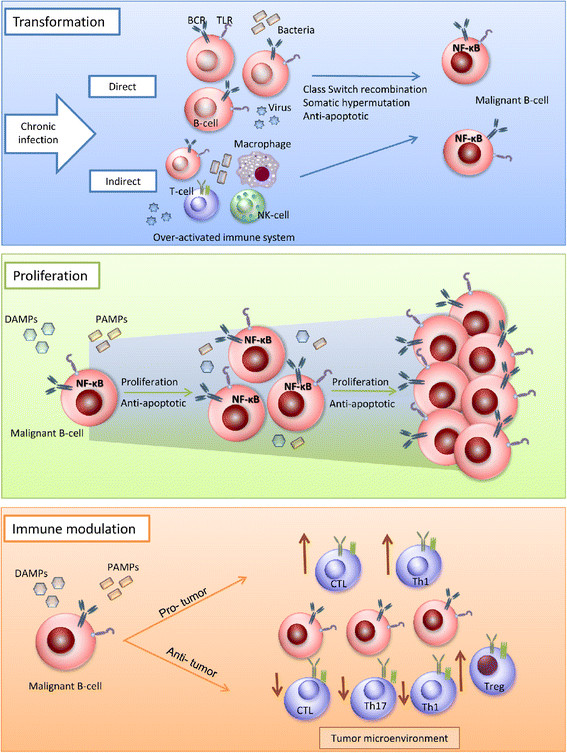Figure 3.

Possible roles of TLRs in the pathogenesis of human B-cell lymphomas. There are three possible mechanisms by which TLRs favor the pathogenesis of B cell malignancies. First, they can indirectly induce B-cell transformation by increasing the probability of mutations and double stranded DNA breaks after activation of naive B-cells or by favoring a pro-inflammatory microenvironment that increases the chance of mutations. Secondly, TLRs can direct the selection of a malignant clone by increasing proliferation and inhibiting apoptosis through the specific activation of NF-κB. Finally, malignant B-cell can modulate the immune response through stimulation of TLRs in two ways possibly depending on the cell type: The-pro tumor response favoring the increase of suppressor cells (like Tregs), and the decrease of a cytotoxic response (by downregulating Th1, Th17 and CTL) or an anti-tumor response by inreasing immunogenicity and increasing the sensitivity to CTLs and upregulating Th1.
